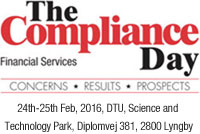Accountability and Transparency are the two sides of the Governance
coin
The road to achieving the transparency and accountability
is paved with a long to-do list, including the implementation of systems,
processes, controls, change management issues and implementation of an integrated
IT tool, to be transparent and accountable.
We review how to avoid the usual check-the-box
approach in implementing transparency and accountability processes in
the organisation. There are business areas where transparency and accountability
are vital components in the company's action plan to establish governance,
risk, compliance (GRC) controls and the related IT activities:
- The traditional silo approach can be a disaster, when implementing
harmonised transparency and accountability oversight and supervision
of processes, structures and infrastructure,
- Start by streamlining the current business model and value chain.
Then review the existing GRC policies, procedures and processes. The
new and increased demands on regulation, risk management and compliance
reporting requires the implementation of a state-of-the- art change
management procedures called automation.
- Determine the cultural consequences when introducing new regulation,
uniform rules and supervision that maintain transparency and accountability
across the organization.
- Regulate the GRC processes; interaction and relationships that currently
function in organizational silo's that should be rectified.
When the above changes are in place an working, then the organization
is ready to define the main barriers to achieving a reasonable degree
of transparency and accountability across the organization with a primary
focus on Governance, Risk Management, Compliance and IT security processes
and activities and determine;
- The strategic uncertainty on where and how the company's compliance
activities are heading.
- What are the business needs on transparency and accountability processes
including third party requirements and IT and risk management
- What are the organizational and procedural conditions and the functional
specialisation required to gain transparency and accountability in
all GRC processes
- Technical complexity arising from the nature of sophisticated reporting
instruments that are reflected both in the current control and risk
management systems to achieve automation.
This article is part of the series on Governance components of Accountability,
Transparency, ethics and Integrity compliance in the organisation.
See another article in this newsletter; Accountability
in business can be a means to improve results.



